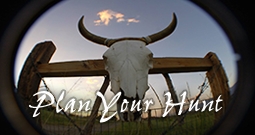Expanding the Family Business: Talbot Pheasants
December 11, 2012 by Chris Keith

When born into a multi-generational family business how does one stay true to their roots but add a unique contribution?For Tim Talbot it all started about 12 years ago. After graduating from Bishop High School, Tim soon realized that college was not for him.Back in the valley Tim was faced with a puzzle, should he follow along with the family ranching business and raise cattle or try something new. Tim’s dad Tom is a local veterinarian and was once the president of the California Cattleman’s Association owns a ranch in Round Valley with his brother Bill.
While doing some research Tim found a book on pheasant farming and thought it might be a way to stay connected to the land and find his own niche. With some help from his grandfather Tim started up his business with 100 pheasants. The day I visited the farm there were around 3,000 birds roaming in large pens, annual numbers are around 8,000. The sounds they made reminded me of my childhood where we had wild versions of these birds wandering the yard. It was quite a treat for me.

Chinese Ring Necked Pheasants are beautiful birds. I learned they are very aggressive too. Tim allows 10 square feet per bird to keep them from feeling crowded and fighting. The males, or roosters, in the pens are equipped with small plastic beak protectors called peepers to keep them from fighting. The hens don’t have the same tendencies and are happy to commingle with the roosters. I wonder if the hen’s bland color patterns means they don’t have the need to strut and pimp their goods the same way the rooster do.
As we wandered the complex Tim showed me the egg laying areas, incubators, explaining how they care for the chicks and keep them warm and safe. It was obvious to me that Tim honored these birds and wanted to give them the best life he could. He has learned the peculiar ways of the birds and works with them so they are happy, well fed and calm. His dog Roxie was with us the whole time and she too had an eye for the animals, but with a different intent. A German Short Hair Pointer, her job is to locate and flush the birds. She also found some other critters in the tall grass and studied them with great focus.
It turned out that the farm was once the home of a dairy and a hand written note on one of the buildings showed that on the 2nd of October in 1956, 670 cans of milk were shipped. Other remnants of earlier days were seen everywhere; an old concrete silo, a working John Deere tractor, and a defunct grain spreader. It turns out the land had been in the family for decades, much of it was a cornfield. Tim pointed out the Milo plants, grain sorghum, that still grows on the farm. A cow got into one end of the complex through an open gate, Roxie took care of that and flushed out the giant.
I saw how the pheasants are transported around the farm in small trailers. Nearly all the birds are sent to hunting clubs around California. They ship 500 birds at a time to locations as far away as El Centro near the Mexico border to Honey Lake north of Susanville and west Camanche Lake near Sacramento. The Lone Pine Pheasant Club is due to reopen soon and this will be a big boom to Tim’s sales.

During the laying season more eggs are produced than are needed for adult birds. The eggs are sold locally at Manor Market in Bishop. Tim told me he could sell live birds but there are no facilities for slaughter or inspection in the area. No birds are used locally in restaurants although some had tried. Pheasant is not an easy bird to cook; they can be dry and stringy if not handled properly. The best pheasant Tim has had are his Grandfathers enchiladas, braised slowly before finishing in corn tortillas, sauce and cheese.
It was a chilly December day when we walked around the farm.A new metal building stood out in contrast from the rest of the complex. Inside was the latest addition to the Talbot Farm, earthworms. It was 75° inside the worm house, a nice chance to warm up a bit. Not only is Tim raising earthworms for fishing bait, he is also gathering the castings, manure, which is a high demand fertilizer. Early we had walked past a pile of pheasant manure and I asked about it’s potential for plant growth. Tim said his Grandmother grew an impressive vegetable garden using the pheasant droppings and it too would be available to anyone who would like to try some.
All in all I spent a good hour or more learning a little bit about the life of a pheasant farmer. As with any livestock rearing it was a hard life full of hard work with many ups and downs. As Tim put it, “I’ve become friends with my clients, created my own business and found a way to stay on the ranch.” With a new baby in his home I wonder what new things the next generation will be doing on the ranch.
The Inyo Belly Project Article: http://inyobellyproject.blogspot.com/2011/12/expanding-family-business.html








